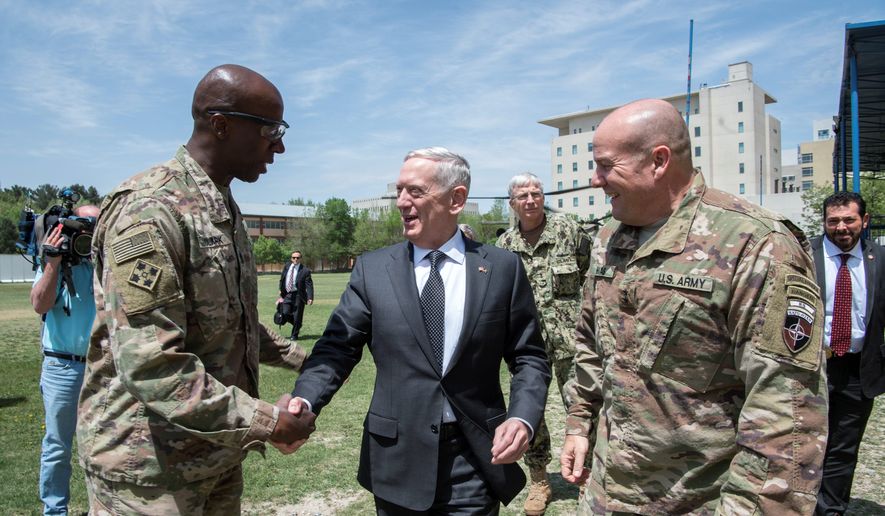President Trump and Secretary of State Rex W. Tillerson made their way across the Potomac for a key meeting with Defense Secretary James Mattis Thursday, to discuss the way ahead in Washington’s wars in Afghanistan and against the Islamic State terror group.
The closed-door meeting comes a day after Mr. Mattis and Chairman of the Joint Chiefs of Staff Gen. Joseph Dunford briefed congressional lawmakers on the status of both campaigns, as well as details on the upcoming release of the administration’s highly anticipated Afghan war plan. The Pentagon has repeatedly stated the department’s Afghan war plan would be on President Trump’s desk by mid-July.
That plan reportedly includes a request for thousands of additional U.S. troops to be deployed to Southwest Asia. When asked whether he plans to approve plans calling for extra American forces to Afghanistan, Mr. Trump replied: “We’ll see. We’re doing very well against ISIS. ISIS is falling fast.”
For the last several weeks, defense officials led by Mr. Mattis have been assessing the current progress of the Afghan war, determining what level of support — including a 3,000 to 5,000 troop increase — will be required to stabilize the country’s security forces. Government-led analysis, as well as reviews by private sector analysts say upwards of 60 percent of Afghanistan is heavily influences or under direct sway by the Taliban.
Afghan forces, advised by U.S. and NATO forces, have suffered heavy casualties to maintain control over the 40 percent of the country ruled by the central government in Kabul.
The war in Afghanistan received little to no attention on the campaign trail last year, with Democratic hopeful Hillary Clinton and then presidential candidate Donald Trump opting to focus on the U.S.-led coalition to defeat the terror group known as ISIS or ISIL. But the tenor in Washington focused back onto Southwest Asia amid growing Taliban gains in the country this spring and the increased ISIS presence in the eastern half of the country.
Currently 8,400 American troops are in Afghanistan, training and advising local security forces. Should the top end troop increase proposal go into effect, it would raise the number of U.S. forces in the country to over 10,000. On top of the increases sought by the Pentagon, NATO leaders have also agreed to surge forces into the war-torn country. NATO Secretary General Jens Stoltenberg announced the decision during an alliance ministerial earlier this year.
The administration announced earlier this year that decisions on troop numbers would be the exclusive domain of Mr. Mattis and his staff. But recent reports state that National Security Adviser H.R. McMaster instituted a soft cap of 3,900 American soldiers, sailors, airmen and Marines, raising questions over the true level of autonomy the Pentagon will have in determining the next steps in the Afghan war.
• Carlo Muñoz can be reached at cmunoz@washingtontimes.com.




Please read our comment policy before commenting.